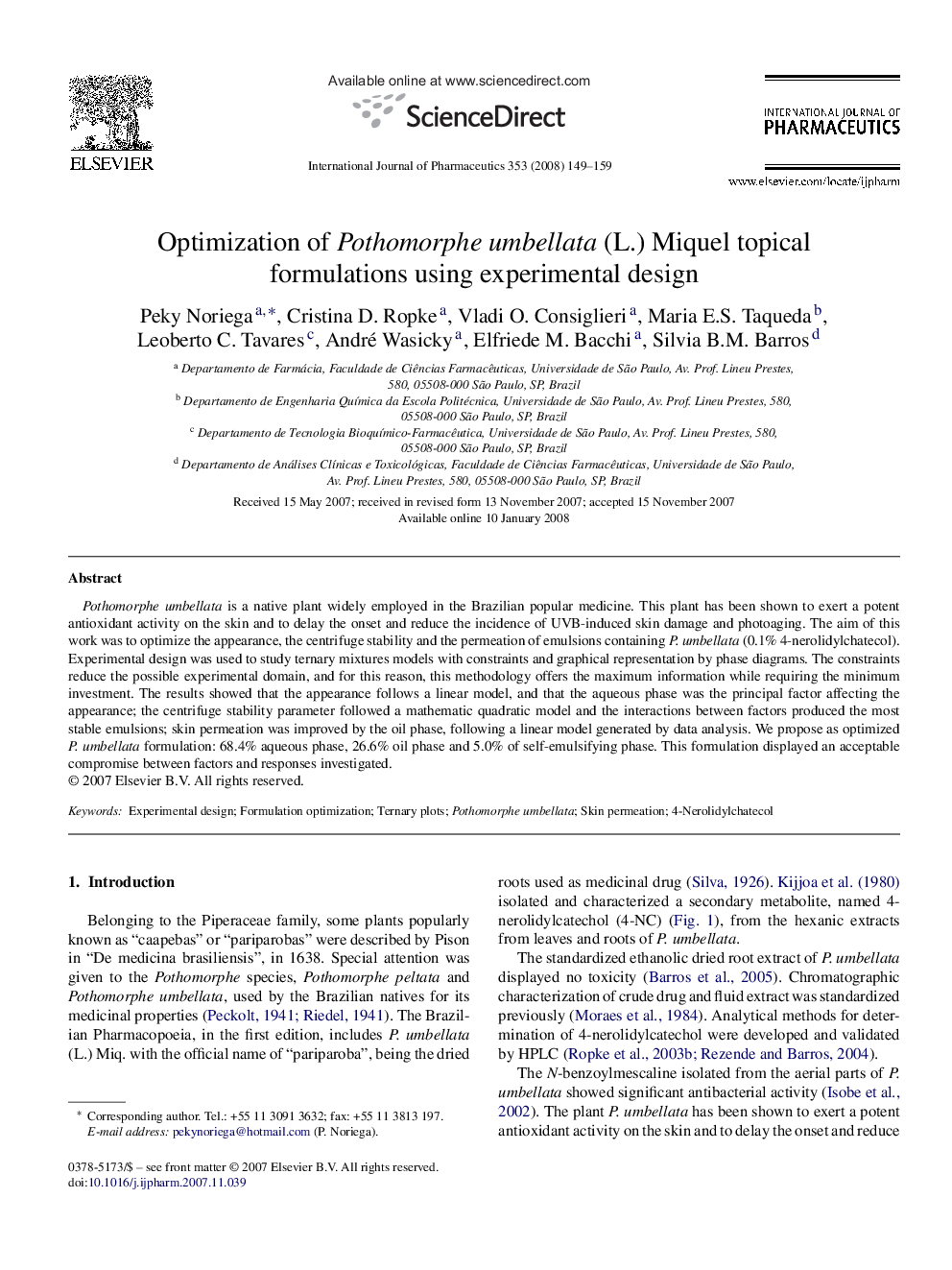| Article ID | Journal | Published Year | Pages | File Type |
|---|---|---|---|---|
| 2505670 | International Journal of Pharmaceutics | 2008 | 11 Pages |
Pothomorphe umbellata is a native plant widely employed in the Brazilian popular medicine. This plant has been shown to exert a potent antioxidant activity on the skin and to delay the onset and reduce the incidence of UVB-induced skin damage and photoaging. The aim of this work was to optimize the appearance, the centrifuge stability and the permeation of emulsions containing P. umbellata (0.1% 4-nerolidylchatecol). Experimental design was used to study ternary mixtures models with constraints and graphical representation by phase diagrams. The constraints reduce the possible experimental domain, and for this reason, this methodology offers the maximum information while requiring the minimum investment. The results showed that the appearance follows a linear model, and that the aqueous phase was the principal factor affecting the appearance; the centrifuge stability parameter followed a mathematic quadratic model and the interactions between factors produced the most stable emulsions; skin permeation was improved by the oil phase, following a linear model generated by data analysis. We propose as optimized P. umbellata formulation: 68.4% aqueous phase, 26.6% oil phase and 5.0% of self-emulsifying phase. This formulation displayed an acceptable compromise between factors and responses investigated.
